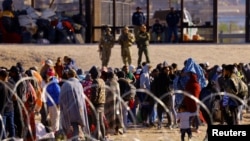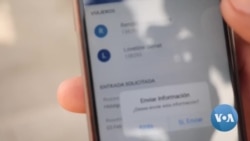The number of migrants encountered at the United States-Mexico border increased 25% from February (130,024 encounters) to March (162,317), according to U.S. Customs and Border Protection.
Yet the March encounters are 23% lower than in March 2022 (211,181 encounters), and the month-over-month change is the lowest seasonal increase in two years, the agency said in its monthly border enforcement report. It added that the increase in encounters from February to March is typical as the weather gets warmer.
“We continue to respond to the challenges presented by increasing global migration. CBP will continue to enforce our immigration laws and ramp up efforts to combat smuggler misinformation as we prepare to return to expedited removal proceedings under Title 8 authorities, which carry stricter consequences like a five-year ban on reentry and potential criminal prosecution for unlawful entry,” CBP Acting Commissioner Troy A. Miller wrote in a statement.
CBP officials credited a parole program for reducing some migrant numbers at the border. The parole program began on January 5 for migrants from Cuba, Haiti, Nicaragua and Venezuela, the four countries that had the highest numbers of migrants trying to cross into the U.S. during the preceding three months.
The humanitarian parole program is an authority given by Congress to the Homeland Security Secretary to create a program for urgent humanitarian or significant public benefit reasons. Its current use for these four countries is directly affecting the decrease in unauthorized migration, including crossing between ports of entry. It also makes it easier to quickly expel migrants from those nations if they cross the border without authorization.
The program allows up to 30,000 migrants a month from each country to enter the U.S. To qualify, these migrants must apply for legal entry while outside the U.S. They must meet all health requirements, pass a background check, and have a U.S. sponsor. Then they proceed with travel arrangements to the U.S.
During March, a total of 27,783 Cubans, Haitians, Nicaraguans and Venezuelans were paroled into the country, where they can live for up to two years. Besides applying for humanitarian parole, some of the pathways available under immigration law are family sponsorship and employment-based visas, among others.
Encounters of migrants from these four countries between ports of entry declined from a seven-day average of 1,231 on February 28 to a seven-day average of 339 on March 31, a drop of 72%.
Those who arrive at the U.S. Mexico border and did not apply for humanitarian parole can apply for a Title 42 waiver exemption. Using the CBP One app, migrants seeking asylum without a visa authorizing them to enter the U.S. must request processing appointments, but the demand has been overwhelming and some complain the app is not working properly.
Watch related video by Victor Hugo Castillo:
Still, U.S. immigration officials reported that from January 12, when use of the app started, more than 74,000 individuals have secured an appointment via CBP One. The top nationalities using the app are Mexican, Venezuelan and Haitian.
In anticipation of the May 11 end of Title 42, a policy that allows for the immediate expulsion of migrants during public health emergencies, the Biden administration began testing faster asylum screening for migrants detained crossing into the U.S. without authorization.
Those who can’t establish a legal basis to remain in the United States will be quickly removed through a process known as expedited removal under Title 8 authority.
Under Title 8, the federal code of laws dealing with immigration, those arriving at the border without documents or trying to enter between ports of entry can be removed without their case being decided by an immigration court.
However, if a migrant wants to claim asylum, an asylum officer interviews them before removal, deportation or the granting of authorization to enter the U.S. to continue the asylum process.
Federal law allows people from other countries to seek asylum in the U.S. if they fear persecution at home. They must be present in the U.S. and prove a fear of persecution.
Immigration experts say Title 8 has always been in use at the border, even during the pandemic. Those removed under Title 8 are also subject to additional long-term consequences beyond removal from the United States, including bars to future immigration benefits.















